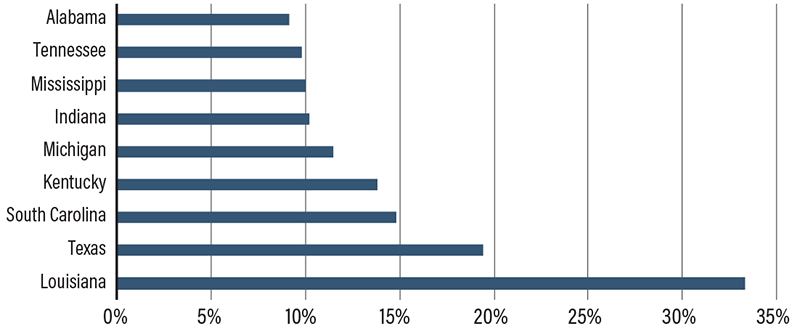Rural Americans Could Be Hurt Most in Trade War

When you hear the term “international trade,” what image comes to mind? A bustling port with colossal ships laden with containers unloading goods from distant lands? Or perhaps you envision a crowded city with busy airports, where planes from across the globe facilitate the exchange of goods and services. Is it California, New York or Washington State? It is likely not rural Gibson County, Indiana, you associate with international trade.
While New York City’s exports as a percentage of gross domestic product (GDP) is between 1%-1.2%, in Gibson County, auto part exports make up roughly 40% of the local GDP. A St. George, Utah, resident might be seated comfortably in their quiet home, reading gossips about the British royals in London, feeling worlds apart—unaware that Utah exports billions of dollars in gold and precious metals to the United Kingdom annually. It is a reality rarely spoken of—rural areas and small counties are more reliant on trade than urban areas. Manufacturing, mining and fracking take place in or near rural areas. According to the U.S. Department of Agriculture, trade-related activities support 20%–25% of employment in rural America.
Which state has the highest net export—exports less imports—and is the most dependent on trade? The answer may surprise you. With exports making up roughly a third of its GDP, Louisiana tops the list for trade dependency. From Texas to South Carolina and Kentucky, many southern states are more reliant on exports. Similarly, many states in the Midwest, where manufacturing and agriculture are key economic drivers, also tend to have high exports as a percentage of GDP. Contrary to what some may believe, urban economies, which are typically driven by services, have smaller exposure to trade, although some may benefit from port activities if they are located on the coastline.
On the imports side, which states are most reliant on trade? Again, it’s southern states and the Midwest—South Carolina (22%–25% of GDP), Michigan (27%–30% of GDP) and Louisiana (roughly 20% of GDP) to name a few. Love it or loathe it, international trade is an invisible force in rural America.
Exports as a Percentage of GDP

SOURCE: U.S. Bureau of Economic Analysis; USA Trade Online.
